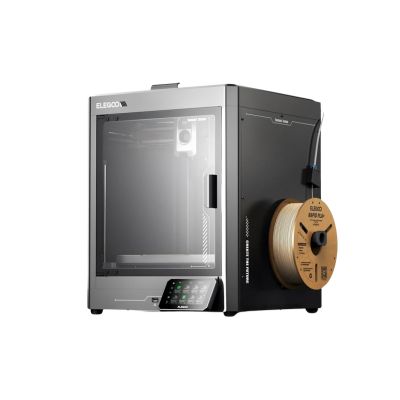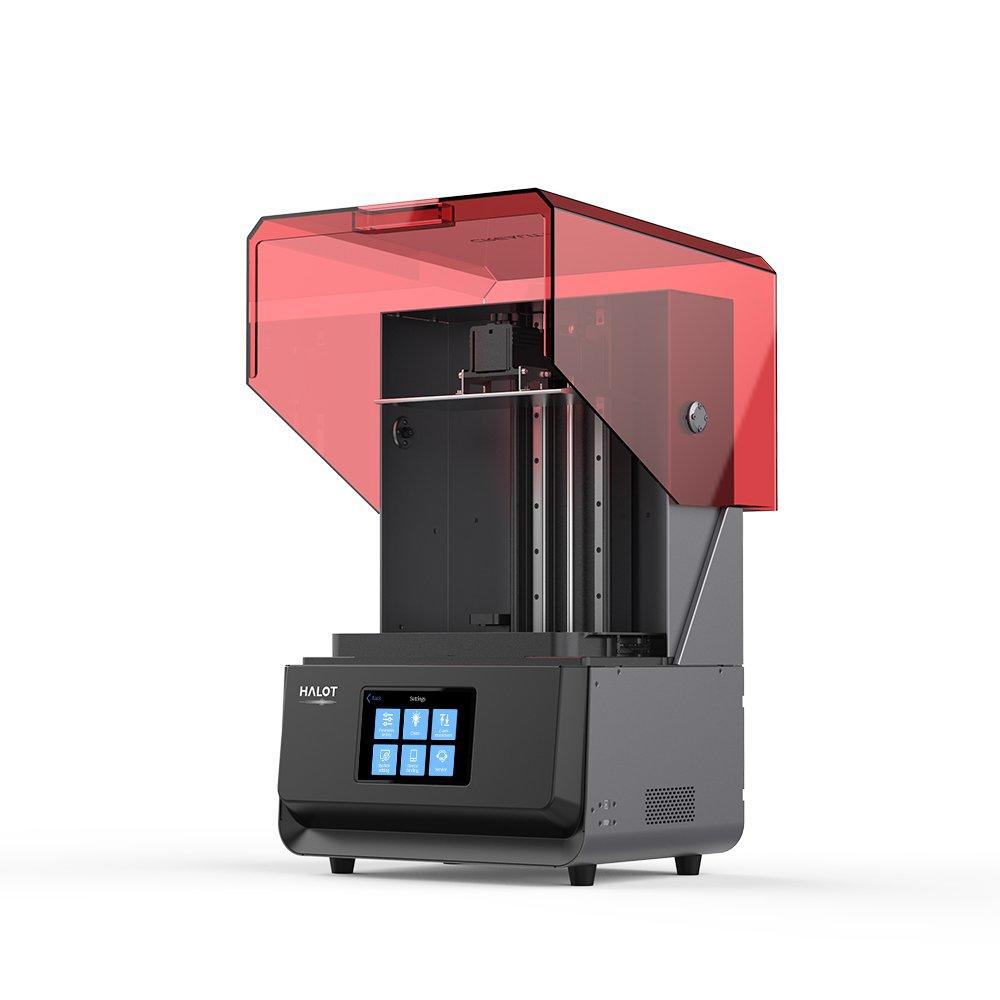Compare Centauri Carbon vs Halot Max
Comparison between the best 3D printers
Choose the best 3D printer at the best price. The cheapest 3D printers are here.
Buy a 3D printer here with 3D Fila.
 |
 |
|
| Model | Centauri Carbon |
Halot Max[BUY Halot Max] |
| Printing Material | Filament | Resin |
| Buy Filament for Elegoo Centauri Carbon | Buy Resin forCreality 3D Halot Max | |
| Estimated price | $500,00 | $3000,00 |
| Manufacturer | Elegoo | Creality 3D |
| Release Year | 2025 | 2021 |
| Print Volume [mm] | 256x256x256 | 293x165x300 |
| Printer Size [mm] | 500x500x600 | 480x387x770 |
| Weight [kg] | 17,5 | 32,5 |
| Power Loss Recovery | YES | NO |
| Maximum Resolution [mm] | 0,1 | 0,03 |
| Processor | ||
| Display | Touchscreen 4,3'' | Display touchscreen 5'' |
| Power Supply | 350 W | |
| Connectivity | WiFi, SD, USB | SD / USB / Wi-Fi |
| Operating systems | Windows, Linux e Macbook | Windows, Mac, Linux |
| Date of registration in the system | 2025-02-10 | 2022-11-04 |
| Release date | 2025 | 2021 |
| Extra features | The Elegoo Centauri Carbon is a CoreXY 3D printer with an enclosed structure, direct drive extruder, and hardened steel components for abrasive materials. It features automatic bed leveling, a touchscreen, a filament cutting system, and an elongated nozzle designed to reduce clogs. It offers Wi-Fi connectivity for remote file transfer and runs on a Klipper-based firmware, providing advanced control and precise adjustments. | The Halot Max printer stands out for its large print size (293 x 165 x 300 mm) and uses SLA technology. It has an integral light source for improved accuracy and a strong core with an advanced operating system. Its Z-axis module ensures high precision, supported by efficient slicing software. The machine offers online OTA updates and boasts an adjustable layer thickness between 10 and 200 microns. Its XY-axis resolution is 3840*2160, with 0.05 mm accuracy, and an integral 405nm light source. The printer includes a 5" touchscreen and multiple connectivity options, such as USB, Creality Cloud, and HALOT BOX WiFi. With cutting-edge technology, the Halot Max is ideal for printing small models with uniform precision, thanks to its self-developed lighting system and stable printing mechanism, which includes dual linear guides, ball screws, and an intelligent brake system. |
| Support for multiple colors and materials (AMS and CFS) | NO | NO |
Notes * |
||
| Cost-benefit | 8 / 10 | 5 / 10 |
| Hardware | 6 / 10 | 1.2 / 10 |
| Tela | . | . |
| Print volume | 4 / 10 | 3 / 10 |
| Performance | 4 / 10 | 9 / 10 |
| [BUY Halot Max] |
Conclusion |
| In comparing the Elegoo Centauri Carbon and the Creality 3D Halot Max, several key differences and features stand out. The Centauri Carbon, priced more economically, offers a generous print volume, advanced features such as an enclosed structure, automatic bed leveling, and a filament cutting system. Its design with a direct drive extruder and hardened components also caters to users interested in printing with abrasive materials. The printer is equipped with Wi-Fi connectivity and a responsive touchscreen, making it user-friendly and versatile for various operating systems. On the other hand, the Halot Max commands a higher price point but boasts advanced SLA technology, exceptional resolution, and features tailored for high precision printing. Its integral light source and Z-axis module contribute to its capability of producing intricate models with fine details. The Halot Max is designed for users seeking superior accuracy, especially for small and detailed prints, and its larger touchscreen enhances its usability. Ultimately, the choice between these two printers depends on the user's specific needs and budget. The Centauri Carbon provides a strong cost-benefit ratio for those needing a robust FDM solution, while the Halot Max is ideal for enthusiasts or professionals who prioritize higher resolution and precision in resin printing. Each printer has its strengths, making them suitable for different types of projects and users in the 3D printing landscape. |

